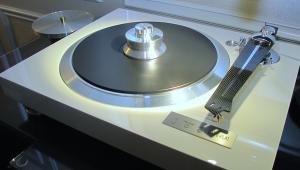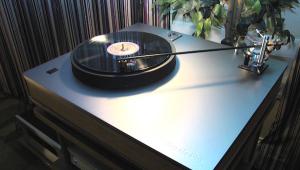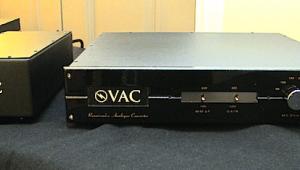"Tour" Pro-Ject's CES Room With Heinz Lichtenegger

Those can also be stood up on a shelf picture frame like. Among the phono preamps introduced was a series for under $1000, one of which includes a headphone amplifier, a high resolution A/D converter with multiple output including USB and TosLink as well as Bluetooth compatibility so you can stream vinyl "live" to a Bluetooth enables speaker, receiver of what have you. It also includes front panel loading and other configurable options.
But rather than read about it take the tour with Pro-Ject's founder and CEO Heinz Lichtenegger who at the end of the video points to an object across the room and says it's finally shipping and that is the company's moderately priced vacuum record cleaning machine, that judging by the YouTube hits on Michael Fremer's Youtube channel has a great deal of interest within the vinyl community. And now, here's Heinz!
| Equipment Reviews | The Gruvy Awards | Blogs Analog Tips | Columns Music | Show Reports | News Resources |
 © 2025 AnalogPlanet
© 2025 AnalogPlanetAVTech Media Americas Inc.
All rights reserved





















































